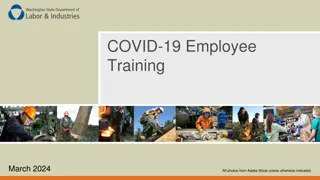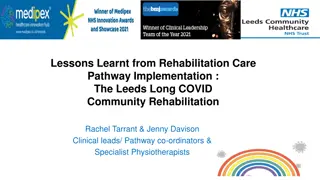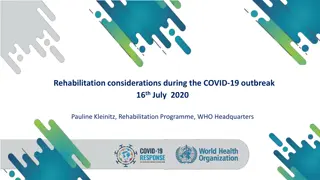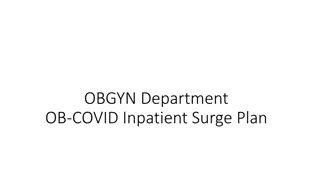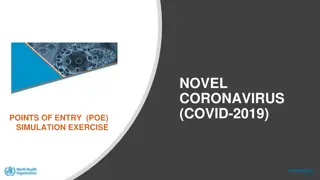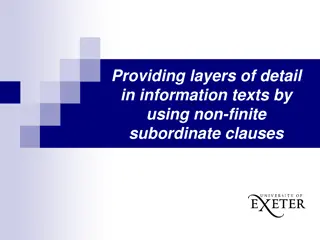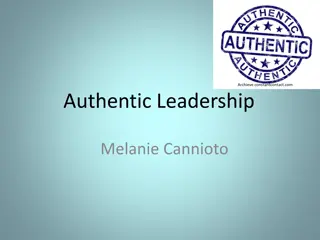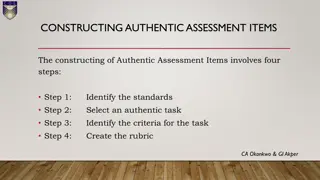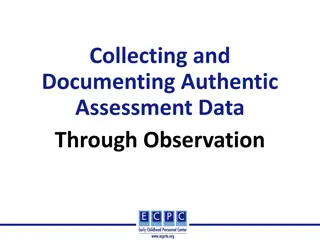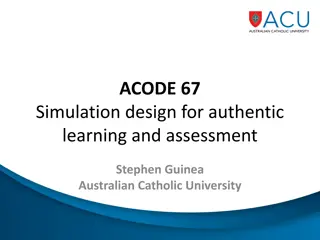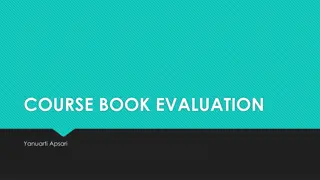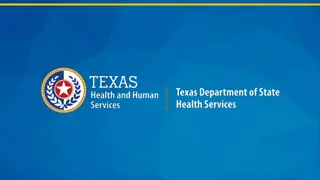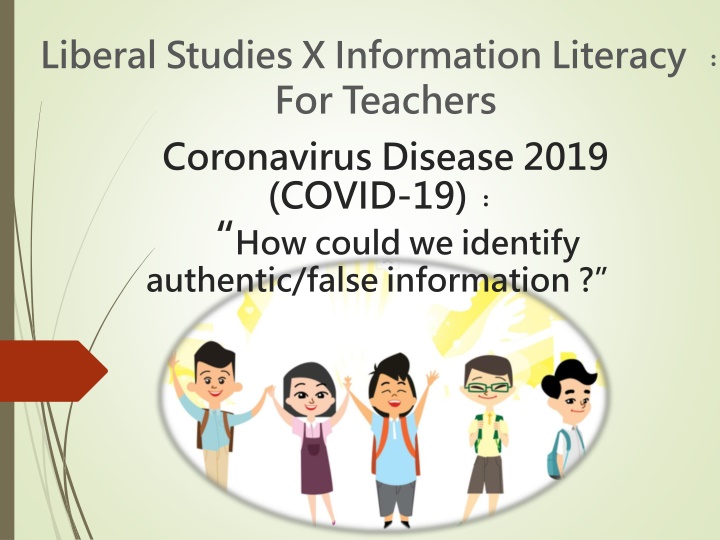
Identifying Authentic Information on COVID-19
Learn how to guide students in discerning truth amid information overload during the COVID-19 epidemic. Encourage critical thinking, source evaluation, and values like integrity and cooperation. Utilize resources like the Information Literacy for Hong Kong Students program to enhance information literacy skills.
Download Presentation

Please find below an Image/Link to download the presentation.
The content on the website is provided AS IS for your information and personal use only. It may not be sold, licensed, or shared on other websites without obtaining consent from the author. If you encounter any issues during the download, it is possible that the publisher has removed the file from their server.
You are allowed to download the files provided on this website for personal or commercial use, subject to the condition that they are used lawfully. All files are the property of their respective owners.
The content on the website is provided AS IS for your information and personal use only. It may not be sold, licensed, or shared on other websites without obtaining consent from the author.
E N D
Presentation Transcript
Liberal Studies X Information Literacy For Teachers Coronavirus Disease 2019 (COVID-19) How could we identify authentic/false information ?
Information overloaded about the outbreak of epidemic ( 2020-02-07) ( 2020-02-03) Government condemns rumour monger (Press Release, the Government of the HKSAR 2020-02-05)
Teachers thoughts In view of the overwhelming amount of information circulated in the public, how can I guide students to find out the truth? What important values and attitudes should my students uphold when facing the serious threat of the epidemic? How could I provide more reliable and accurate information and sources for students? What could I do to protect students from the disturbance of rumours, enhance their critical thinking skills and enable them to develop multiple perspectives?
Brief introduction Guide students to understand the importance of information literacy, think critically in face of the outbreak of epidemic, and not to be disturbed by rumours. Teaching objectives Remind students to distinguish the sources and reliability of different types of messages cautiously. Encourage students to find out reliable facts by paying attention to the information delivered by the Government and people with high credibility. respect for evidence, respect for others, sense of responsibility, care, integrity, solidarity, cooperation, information literacy Values / Attitudes
Information Literacy for Hong Kong Students(EDB) The Information Literacy for Hong Kong Students is developed to help schools understand how to develop students knowledge, skills and attitude to use information and information technology at different key stages. identify the need for information; locate, evaluate, extract, organise and present information; create new ideas; cope with the dynamic in our information world; and refrain from unethical use of information such as cyber-bullying and infringing intellectual property rights. Source: Information Literacy for Hong Kong Students(EDB) https://www.edb.gov.hk/en/edu-system/primary-secondary/applicable- to-primary-secondary/it-in-edu/information-literacy/il-document.html
What areas does the Information Literacy for HK Students encompass? 1. Use, provide and communicate information ethically and responsibly 2. Identify and define a need for information 3. Locate and access relevant information 4. Evaluate information and information providers, in terms of authority, credibility and current purpose 5. Extract and organise information and create new ideas 6. Be able to apply IT skills in order to process information and produce user-generated content 7. Recognise the roles and functions of information providers (e.g. libraries, museums, internet) in the society 8. Recognise the conditions under which reliable information could be obtained Source: Information Literacy for Hong Kong Students(EDB) https://www.edb.gov.hk/en/edu-system/primary-secondary/applicable-to-primary secondary/it-in-edu/information-literacy/il-document.html
Suggested Learning & Teaching Activity
Suggested Learning & Teaching Activity Should I forward this message? Ask students to select 1 message about COVID-19 recently received from the online chat groups/ online platforms Make reference to the suggested checklist, reflect upon the content and source of message, and verify the authenticity of the content so as not to blindly forward inaccurate information. Refer to the suggested teachers feedback to guide students to think critically about the message
Please read the following sample message carefully < 1 Happy Family Group Forwarded Forwarded on 3.2.2020 on 3.2.2020 (Breaking news!!! Please spread!!!)There is a global outbreak of Coronavirus Disease 2019 (COVID-19)! A large-scale infection has occurred in Hong Kong. The HKSAR Government is about to impose a ban on the import from the Mainland. This will seriously affect the supply of goods. Everyone should go to the supermarket to buy daily necessities and food as soon as possible! In addition, don t forget to buy and hoard a large quantity of masks and alcohol disinfectant at home for emergency use!!!
Suggested Questions for Reflection Who created the message? Who forwarded the message to me? What should I do after receiving the message? What are the contents of the message, and how can I verify them? What will happen if I forward unverified messages?
Suggested feedback Who created the message? During a severe epidemic, it is difficult to find the author of the message, but if it is not from credible agencies or Government official information, we should always stay alert. Who forwarded the message to me? The person who forwarded the message may be your family, friends, or even seniors. They may forward the message out of love and care, but this does not mean that the message forwarded must be correct. Instead, we must verify the content of the message and inform the sender to correct the message in a timely manner. To be a responsible person, we should not forward any doubtful and incorrect message.
What should I do after receiving the message? Guide students on how to respond to any forwarded message received. Students should first stop and think , instead of rushing to forward the messages received. They should find out the key points of the message, analyse and verify it detailedly, point out any unreasonable and illogical contents, respect for evidence and think critically. What are the contents of the message, and how can I verify them? Prompt students to analyse the contents of the message carefully and try to identify any parts unreasonable. For example, there are two main points mentioned in the sample message : First: Hong Kong has a large-scale infection Second: The HKSAR Government is about to impose a ban on the import from the Mainland. Since this message involves officially published information, students should check the relevant information from the Government website. (see next page)
Whatre the contents of the message, and how can I verify them? The message was received on February 3, 2020. According to the Centre for Health Protection of the Department of Health, no new confirmed cases of the Coronavirus Disease 2019 infection were recorded as of 8 pm on February 3, and the number of confirmed cases in Hong Kong remain to this day was 15 (Source: https://www.info.gov.hk/gia/general/202002/03/P202002030073 6.htm ) Therefore, the large-scale infection" mentioned in the message is incorrect. The official website of the HKSAR Government mentioned about the measures for further reducing cross-border passenger flow, but did not mention about cross-border arrangement for goods. (Source: https://www.info.gov.hk/gia/general/202002/03/P20 20020300759.htm ) Teachers should guide students to think critically and verify the data source when rumours occur.
Make reference to Government official websites The HKSAR Government has clarified that the epidemic prevention measures will not affect freight transportation between Hong Kong and the Mainland and the food supplies are adequate. Source of pictures and information: Press Release of the Government of the Hong Kong Special Administrative Region https://www.info.gov.hk/gia/general/202002/05/P2020020500797.htm
What will happen if I forward unverified messages? If the unverified message is forwarded, the negative consequences may not appear immediately, but in an age of conformity, some people will eventually hoard the goods, resulting in insufficient supply, and those who are really in need may not be able to obtain the resources in time.
Reference Census and Statistics Department of The Government of the Hong Kong Special Administrative Region https://www.censtatd.gov.hk/home/index.jsp Centre for Health Protection, Department of Health of The Government of the Hong Kong Special Administrative Region https://www.chp.gov.hk/en/index.html National Bureau of Statistics http://www.stats.gov.cn/ GovHK http://www.gov.hk/en/residents/ Press Releases of The Government of the Hong Kong Special Administrative Region https://www.info.gov.hk/gia/ISD_public_Calendar_en.html?fo ntSize=1
Summary: Together! We fight the virus! During a severe epidemic, teachers can: Encourage students to act positively and apply and practise information literacy. Guide students to select information carefully and do not forward unverified messages. Share proven and reliable information to get students together to fight the virus Image source: Centre for Health Protection, Department of Health https://www.chp.gov.hk/tc/healthtopics/content/24/102466.html

